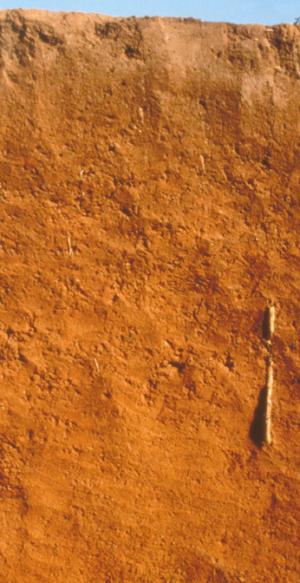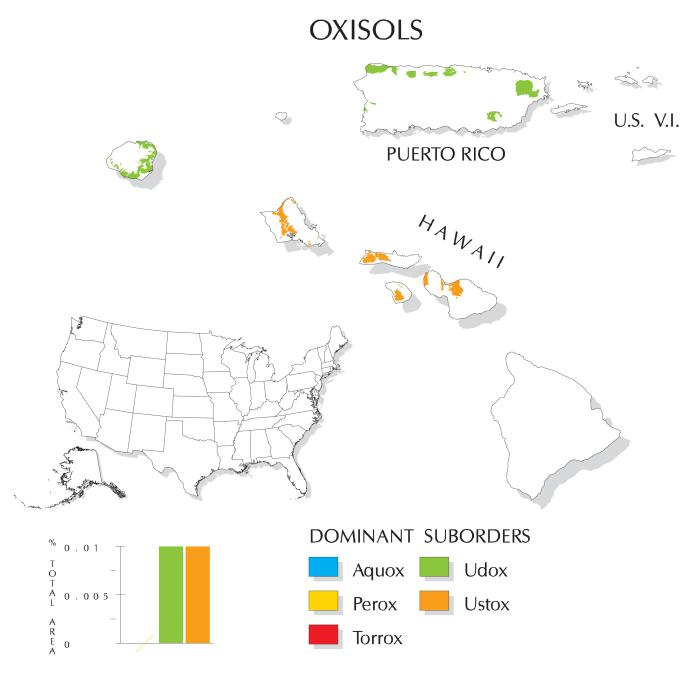Oxisols
Oxisols are highly weathered soils of tropical and subtropical regions. They are dominated by low activity minerals, such as quartz, kaolinite, and iron oxides. They tend to have indistinct horizons.

The central concept of Oxisols is that of soils of the tropical and subtropical regions. They have gentle slopes on surfaces of great age. They are mixtures of quartz, kaolin, free oxides, and organic matter. For the most part they are nearly featureless soils without clearly marked horizons. Differences in properties with depth are so gradual that horizon boundaries are generally arbitrary.
Dominant Suborders
Aquox
Aquox are the wet Oxisols. They are rare in the United States and are known to occur only in Puerto Rico or in Hawaii. Curing many seed crops and storage of produce are difficult on these soils.
Torrox
Torrox are the Oxisols of arid regions. Torrox are very rare in the United States.
Udox
Udox are well drained Oxisols with a udic soil moisture regime. They are known to occur only in Hawaii, Puerto Rico, and Guam. They have a year-round growing season. The dry period is short enough for rainfed crops to be grown continuously in normal years.
Ustox
Ustox are the Oxisols that have an ustic moisture regime. They are known to occur only in Hawaii, Puerto Rico, and Guam. They are moist long enough for one rain-fed crop. Crops are not grown continuously on these soils because there is inadequate moisture for at least 90 days in normal years.

Oxisols are only on tropical and subtropical islands. Most are infertile. The natural vegetation ranges from tropical rain forests to desert savannas.

